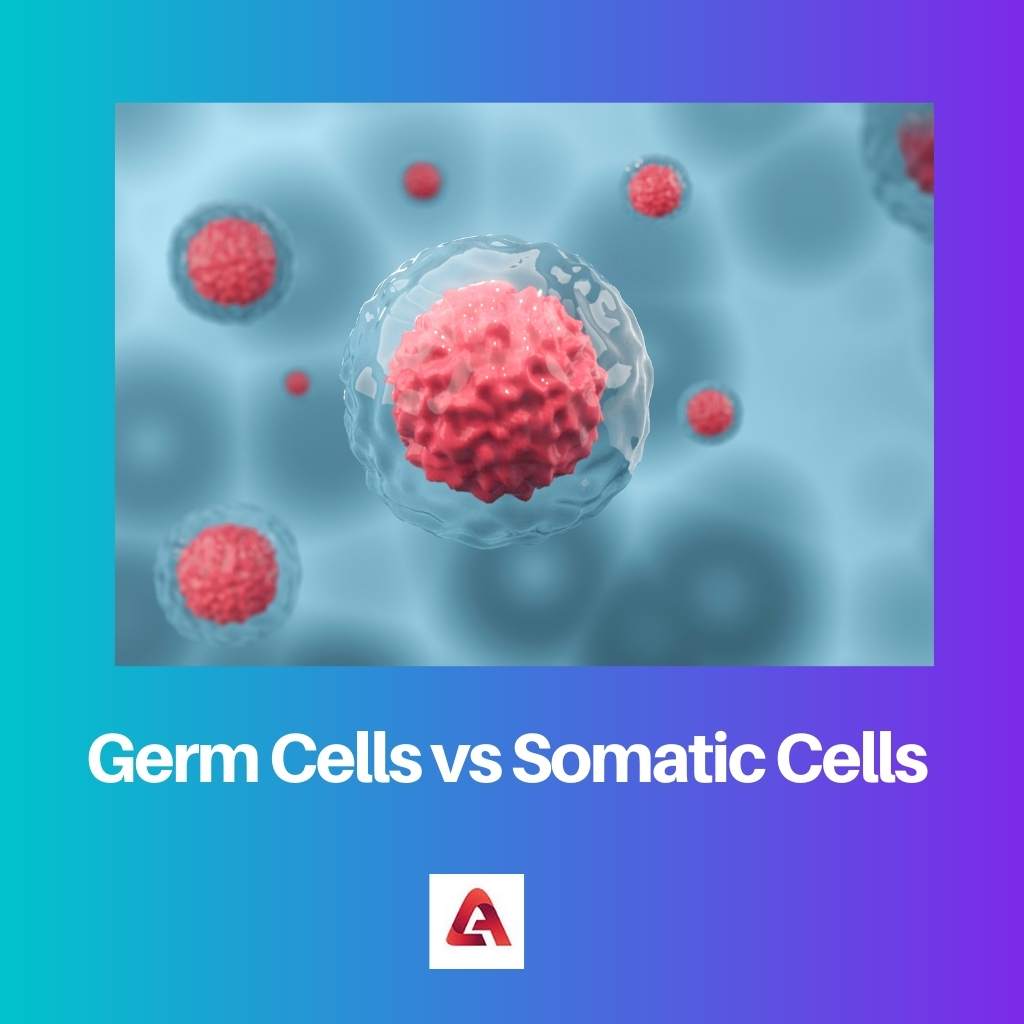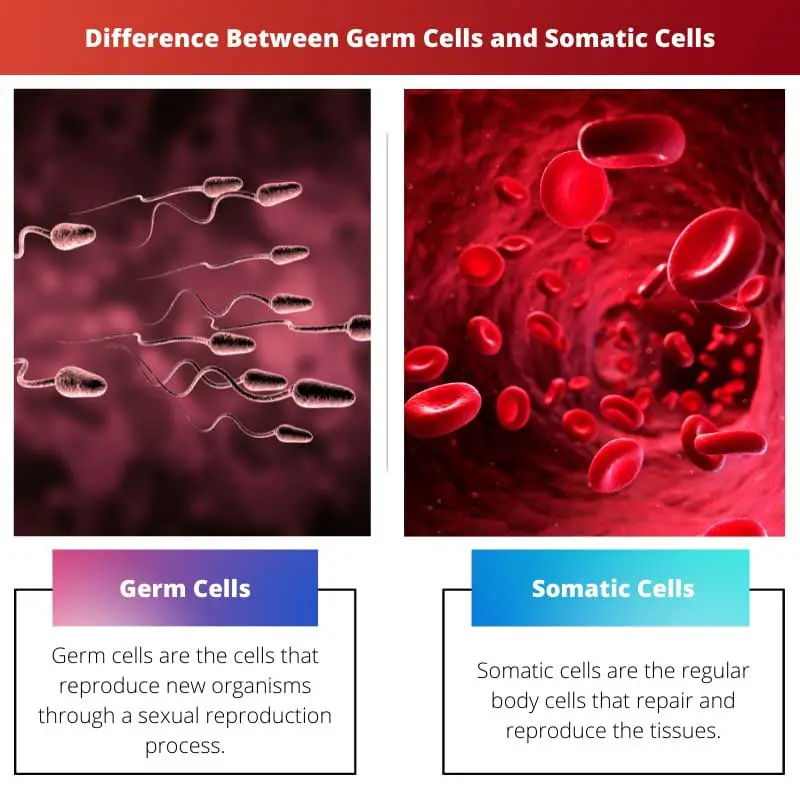Cells are an essential part of every living organism. The human body has trillions of cells that are grouped into different cells. Germs cells and somatic cells are used in transforming genes and growing organisms within the body.
Key Takeaways
- Germ cells are reproductive cells, whereas somatic cells are non-reproductive cells.
- Germ cells are haploid, meaning they contain half the number of chromosomes compared to diploid somatic cells.
- Germ cells undergo meiosis to produce gametes, whereas somatic cells undergo mitosis to produce new somatic cells.
Germ Cells vs Somatic Cells
The difference between germs cells and somatic cells is that germ cells are used to produce new organisms through the process of sexual reproduction. On the other hand, somatic cells are diploid cells that are involved in asexual reproduction. They are the cells that do not contribute to generating gametes.

Germ cells are the unique cells in the human or any other living organism body that transforms genetic information from one generation to the next generation. They undergo meiosis and mitosis to generate eggs and sperm in female and male bodies. These emerge from the primitive streaks of the embryo and move to the gonads via the gut.
On the other hand, somatic cells are regular body cells that have different functional systems like digestive systems, nervous systems, cardiovascular systems, and others. Somatic cells are responsible for growing organisms.
Comparison Table
| Parameters of Comparison | Germ Cells | Somatic Cells |
|---|---|---|
| Definition | Germ cells are the cells that reproduce new organisms through a sexual reproduction process. | Somatic cells are the regular body cells that repair and reproduce the tissues. |
| Originated from | Germ cells are originated from primitive streaks of the embryo. | Somatic cells are originated from stem cells. |
| Function | Germ cells are used in producing gametes. | They perform various functions in different tissues of the body. |
| Process | They undergo both mitosis and meiosis processes. | They undergo the mitosis process. |
| Mutation | The mutation is transformed from one generation to other. | The mutation is not transformed to the next generation. |
What are Germ Cells?
Germ cells transform the genetics from one generation to another during the reproductive process. Germ cells produce gametes to create offspring.
In humans, germ cells stem from primordial germ cells, which separate during embryogenesis to become progenitors.
Germ cells are only used in the reproductive systems undergoing meiosis to generate egg and sperm cells. The germ cells are few in number as compared to somatic cells but affect the evolution process.
Germ cells reside in the gonads. In females, the gonads are ovaries, and in males, the gonads are testes. During reproduction, the females produce gametes called eggs and male gametes called sperms.

What are Somatic Cells?
Somatic cells are the regular body cells that arise from stem cells. In asexual reproduction, mitosis produces somatic cells that create two new cells from a mother cell.
Living organisms have various somatic cells, and their functionalities vary based on time and environmental factors.
Neuron cells are present in the nervous system, blood cells in the cardiovascular system, liver cells, and stomach cells form in the digestive system. Every cell in the body helps the human body to function well.
However, these cells do not contribute to evolution. These cells are essential for living organisms but are not used to produce sperm cells. They originate clones by undergoing cloning.

Main Differences Between Germ Cells and Somatic Cells
- Germ cells undergo meiosis and mitosis processes, but somatic cells undergo only the mitosis process.
- Germ cells are situated in the gonads of living organisms, but somatic cells are present everywhere in the body.





